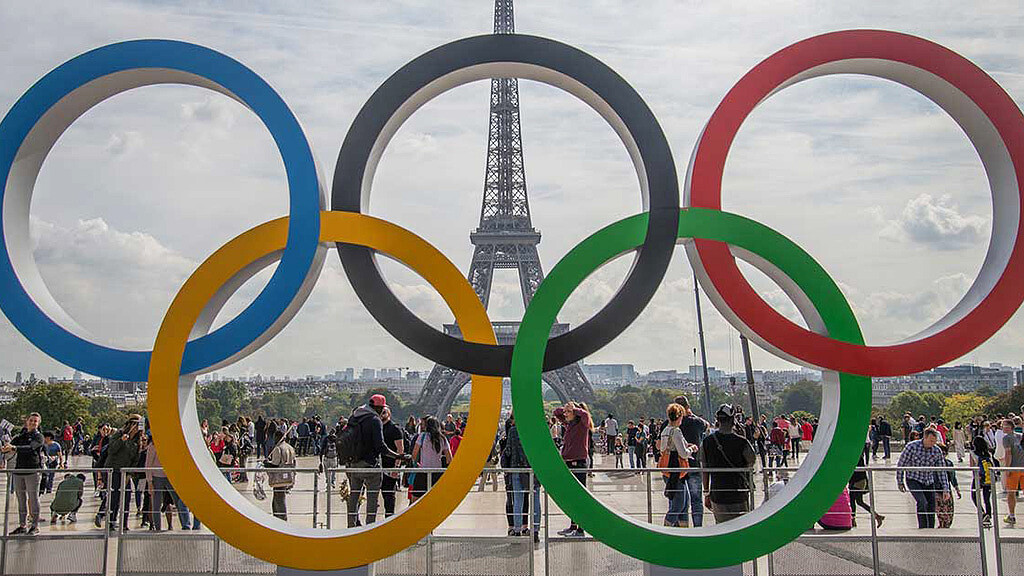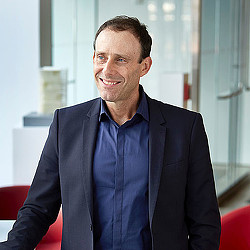How the Olympics and Paralympics Can Shape Cities in New Ways
July 31, 2024 | By Mark Erdly
Like the rest of the world, I’ve been watching the Paris 2024 Olympic and Paralympic Games this last week in awe. This unprecedented and beautiful spectacle melding art, architecture, and sport reshapes our preconceptions about human experience.
In The New York Times, Richard Cohen described Paris before the Games as “the transformation of a great city into a stadium,” in praise of the audacious plan to blend the venues into the very fabric of the historic core.
On the eve of the Opening Ceremonies, the French Embassy and the Meridian International Center hosted a celebratory reception at the French Ambassador’s residence in Washington, D.C., where I had the honor to be a panelist in a roundtable discussion to explore the role of the Olympics movement in promoting environmental sustainability, inclusion, economic development, community, and city building.
In this context and as Gensler’s Southeast Region’s Cities & Urban Design practice area leader, and (in a previous life) as a lead planner in D.C.’s 2012 bid, I’ve been thinking about the intersection of the Games and their host cities, and where Paris might take us in the future.
Legacy
During the panel, we discussed that Olympics planning IS city planning. They are two sides of the same coin. The city constrains and imprints its unique DNA on the Games, and the Games can unlock a city’s future potential while showcasing it in novels ways.
Thus, there are two timeframes to plan for: the ephemeral and the generational — the ephemeral being the games themselves over the course of weeks and the generational being the legacy impact they leave behind on the city’s future trajectory.
Through the lens of city building, legacy can be good and bad. Looking at recent Olympics history, three general development paradigms emerge. In the first, as evidenced in Sydney (2000), Athens (2004), Beijing (2008), and Rio (2016), massive investments in sparkling new venues yielded an unsustainable legacy of largely unused white elephants symbolizing wasteful extravagance.
However, the second, as evidenced in Barcelona (1992), Atlanta (1996), London (2012), and Tokyo (2021), as well as in Athens and Rio, strategic investments in urban infrastructure enriched their cities’ quality of life for generations: improved mobility (Athens and Beijing), revitalized and transformed downtowns (Atlanta and Barcelona), and livable communities reclaimed from landfills and industrial sites (London and Tokyo).
The “light touch” third development paradigm to which Paris belongs was born out of crisis. Back in 1984, the Los Angeles Games saved a bankrupt and demoralized Olympics movement by minimizing costs and using the city’s existing venues, a dispersed yet limited footprint that reignited interest in the Games while celebrating the magical grandeur of a great American metropolis.
Sustainability
Perhaps unintentionally, Los Angeles was a pioneer of the sustainable international Games movement. By repurposing and reusing existing venues, the 1984 Olympic Games reaffirmed that the most sustainable buildings are those that already exist.
With just one new venue, the 2024 Paris Games is by far the most venue-frugal of all past Olympics. A strong emphasis on temporary adaptive reuse — perhaps the most striking of many examples being fencing at the Grand Palais — gives the Games a transcendent vibe. With grand boulevards and renaissance architecture as backdrops, the problem of how to make temporary extraordinary solves itself.
More broadly, Paris is truly the first green Olympics and positions sports to help drive environmental transformation. As my colleague, Tayomara Gama, Sports leader for Gensler Europe, noted in her insightful blog, this necessitates a multipronged approach: carbon neutrality, biodiversity, human health, and technology. It also means eschewing the traditional linear model of development — produce, consume, discard — for a circular, regenerative approach to city building, which, parenthetically, increasingly underpins our Cities & Urban Design practice point of view.
We also love that Paris is introducing more indigenous flora and fauna on the Games’ sites, part of a larger global trend of urban reforestation that helps to filter air and water, control storm water, conserve energy, and provide animal habitat and shade.
Equity and Diplomacy
Finally, we need to consider the Games’ responsibility towards equity and inclusion. I was joined at the Embassy reception roundtable by Dr. Damion Thomas, the Museum Curator of Sports at the Smithsonian National American Museum of African American History and Culture, who reminded us of the myriad challenges American athletes of color have endured over the decades. These global Games need for broader cultural representation, including committing to a first African Olympic Games.
Dan Mickelson, Sports Diplomacy Chief at the U.S. Department of State, who joined Damion and me at the roundtable, also made the case that the Games present an opportunity through “sports diplomacy” for countries to support interconnectedness and dialogue outside of traditional political channels. The Olympic and Paralympic Games bring the entire world together into a large civic amalgam, not unlike the great cities we inhabit.
Looking Forward
In terms of experience and sustainability, Paris has raised the bar and set a new standard. Which brings us back to the future, circa Los Angeles 2028.
The LA Games will be the first Olympics and Paralympics with no new permanent venues. That’s a good start. Can the city elevate the Olympic movement’s environmental mission while fusing sport and culture in a way that only California can?
We can’t wait to see.
For media inquiries, email .

